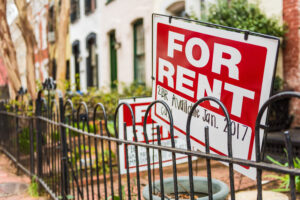Setting the rental price for your investment property is one of the most important decisions you’ll make as a landlord. Getting it wrong could mean losing out on thousands of dollars. Thankfully, there are some simple tools to help you determine how much to charge.
These tips can help you establish a price that accurately reflects the market rental value of your property and also makes financial sense for you and your renters.
Why It Matters
First-time landlords often make the mistake of pricing their rental too high or too low. Both scenarios put you at a disadvantage and ultimately end up costing you money. Here’s how:
- Too high: When a property is priced too far above market rental value, it can take much longer to find a qualified tenant (if you find one at all). Months go by and the property sits vacant. Already you’re missing out on revenue, and if you’re still paying off the mortgage, then you could be setting yourself up for financial trouble too.
How to Determine the Right Price
Your local rental market is the single best resource for determining a fair rent price for your property. By looking at comparable rentals in your neighborhood, you can gain insight into what other landlords are charging. Here are some easy ways to do this:

- Use online tools, such as Rentometer and Zillow’s Rent Estimator, to get a quick estimate for your property. Simply enter the property address and you’ll receive an estimate based on publicly available data about your property, compared with local rental data from the previous year.
- Search active rental listings in your area to see how much similar properties are going for. When applicable, check how many days the listing has been posted and whether the price has dropped during that time. This may signify the owner has had trouble finding applicants at the current prices.
- Speak with local property management companies. Some may have listings that aren’t published online, which can provide additional insight into how much rentals nearby are being priced.
Fine-Tuning Your Rent
Online estimators will give you a good ballpark range, but what if you’re unsure if your price should be at the top or bottom of that range? That’s where the overall desirability of your property comes into play.
Consider any factors that may make your property more desirable than others on the market, beyond the basics like square footage or number of bedrooms. Examples include:
- Location within desirable neighborhoods or school districts
- Proximity to pharmacies, grocery stores, and public transport
- Proximity to shopping, restaurants or culture centers
- Extra storage space, such as a basement, attic or garage
- Attractive amenities, such as updated appliances and fixtures
If you discover that your property has more of these characteristics than other rentals on the market, then you probably have room to bump up the price a bit.
Final Considerations
When you first post your listing, set the rent at the upper end of your range. This will allow you to gauge the response for a week or two, and then adjust the price accordingly if you aren’t getting any bites.
Setting a higher initial price also allows room for negotiation. While not all applicants will attempt to negotiate the rent, you’ll want to be prepared in case they do. Keep in mind that you’re looking for the best tenant possible. If you find the perfect applicant, it ultimately works in your favor to have them sign the lease, even if it means working with them on the price.
Subscribe to keep informed!







